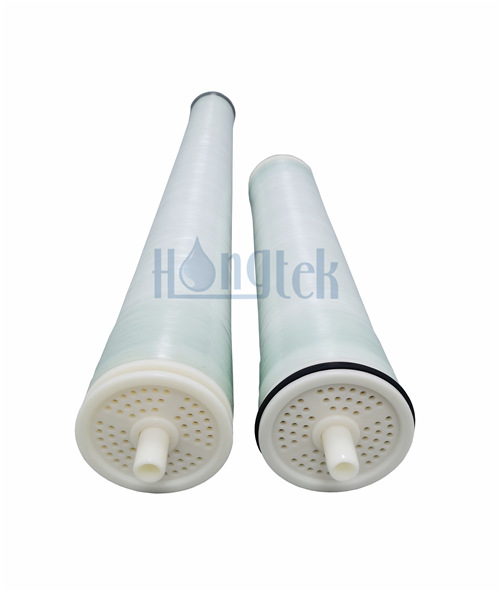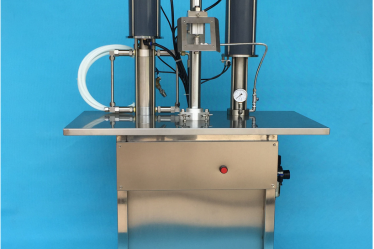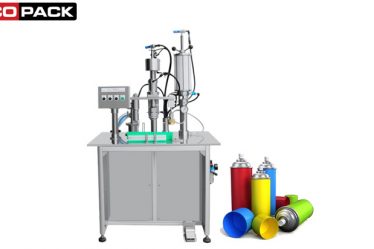

Water Treatment Series – What is an RO Water Treatment Series?
Reverse osmosis systems produce bottled water quality hydration in your home without the expensive single-use plastic bottles and weekly grocery store runs. The heart of an RO system is the membrane, which reduces contaminants and produces clean, fresh drinking water.
Membrane selection, pretreatment options, RO process configuration and sizing are key components of optimizing large RO systems. Commercially available process design software, like ROSA from FILMTEC and IMDDdesign from Hydranautics, can help.
Reverse Osmosis
Reverse Osmosis uses high pressure to overcome natural osmotic pressure, forcing feed water with its load of dissolved salts and impurities through a semipermeable membrane. The RO membrane is designed to filter out a large majority of the contaminants. The resulting clean water is known as permeate while the rejected salts and impurities concentrate below the membrane and are discarded as waste water (or brine).
Water that enters the RO membrane may come from several sources including prefiltration, the RO storage tank, and the RO membrane itself. It first passes through a sediment prefilter to remove large particles like sand, dirt and chlorine. It then moves on to an activated carbon prefilter that binds and removes organic compounds like lead and chlorine. Some five-stage systems add a post-filtration step that sends the water through another carbon filter to remove any lingering tastes or odors.
The heart of a reverse osmosis system is the semipermeable RO membrane that separates clean drinking water from dirty feed water. The membrane is designed to filter out a vast majority of organic molecules and many of the inorganic ones as well. Ions are rejected based on their valence; those with a higher charge (like chloride) will be more easily pushed through the membrane than those with a lower charge (like sulfate).
Once the water passes through the RO membrane, it goes to a pressurized storage tank where the cleaner water is stored. The rejected salts, minerals and other impurities are sent to drain as waste water. In fact, about 4 gallons of the reject water leaves the system for every gallon of clean water it produces. The wastewater can be sent to a RO Water treatment series local water treatment plant for processing or it can be pumped back into riverbeds where it will be filtered through the hydrologic cycle once again.
Water Softener
A water softener removes calcium and magnesium from your home’s drinking water through a process called ion exchange. When hard water enters a softener’s mineral tank, it passes through a bed of spherical resin beads made from polystyrene that are charged with sodium ions. The resin’s negative charge attracts and clings to the positive charges of the calcium and magnesium ions, exchanging them for sodium ions in your water. As the resin tank fills up with hardness minerals, it needs to be « regenerated, » or cleaned, by running a brine solution through the tank and exchanging the salt for fresh sodium ions.
Most residential water softeners use ion-exchange technology. This is the most popular method for removing water hardness, and it’s also the cheapest way to treat hard water. However, long-term usage of ion-exchange systems may deplete the body of essential minerals.
A water softener must be located in a dry location, near a drain for the salt solution and an electrical outlet to operate. It should also be installed close to the main water line and before your hot water heater, as hard water does the most damage to this appliance. Commercial cleaners are available for a periodic clean of the resin bed inside your water softener to prevent fouling (clogging).
Filtration
Filtration is a water treatment process that separates solid particles from fluid using a medium that retains the solids and lets the liquid pass. The medium is usually a porous material such as sand, cellulose or carbon. The larger particles are trapped on the surface of the filter medium and the smaller particles are held in the pores.
RO water systems use a semipermeable membrane RO Water treatment series to remove a broad range of aesthetic and health-related contaminants from the water. The treated water is stored in a pressurized storage tank where it can be dispensed as needed. Some systems may include a post filtration « polishing » filter to remove any remaining tastes or odors.
Reverse Osmosis works by pushing water through a special membrane at high pressure. This high pressure is created by a high-powered pump. For every gallon of feed water pushed against the membrane, up to 75 gallons of usable permeate water is produced. The rest of the water is sent down a drain as concentrate.
Large industrial and municipal RO systems recover anywhere from 75% to 85% of the feed water. To increase recovery, some RO systems utilize a concentrate recycle setup where a portion of the concentrate is returned to the feed stream to help reduce overall energy costs and membrane life.
Recycling
The water that passes through the RO membrane is called the permeate stream. The water that carries the contaminants that do not pass through the membrane is known as the concentrate stream. This is where the fouling of an RO system typically occurs. Fouling causes a reduction in the flow of permeate and increase in pressure drop across the membrane which can lead to a failure of the RO membrane. Several methods can be used to prevent fouling such as multi-media filters, microfiltration and cartridge filtration.
One method is to use a “multi-media” filter (MMF) that consists of a layer of anthracite coal, a layer of sand and a layer of garnet. This allows the largest dirt particles to be removed at the top of the MMF while allowing smaller particles to remain deeper in the MMF and helps to reduce the fouling potential for an RO system. Another method is to use a pretreatment chemical such as a biocide which will help to prevent the growth of bacteria on the surface of the RO membrane. This is particularly effective on municipal feed water that has a high fouling potential.
In many applications the RO process is used in conjunction with other types of water treatment. For example, a large part of seawater desalination uses RO as the final step after treating the seawater in a conventional distillation plant. This hybrid process significantly decreases treatment costs and lengthens the life of the RO membranes.

